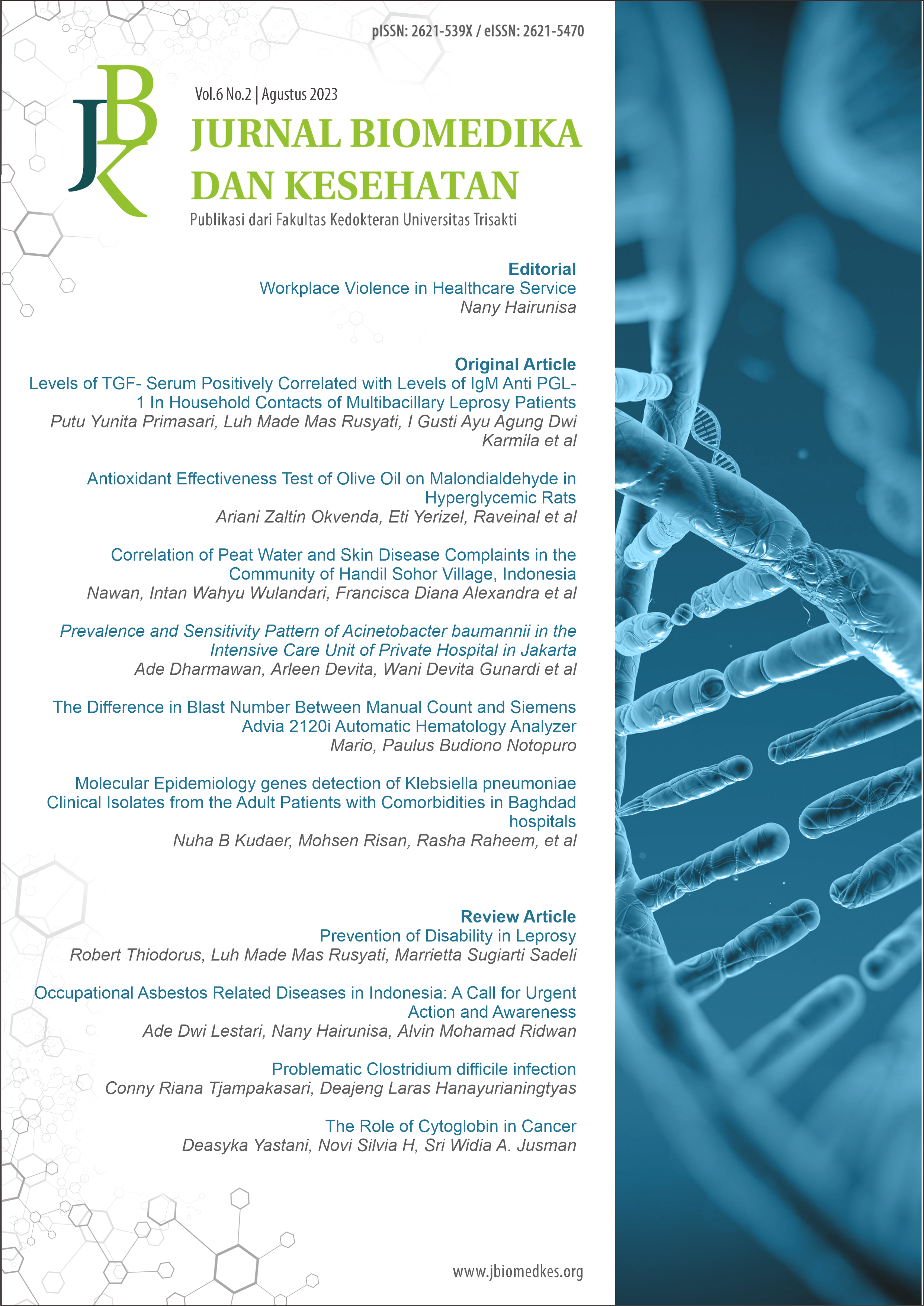Antioxidant Effectiveness Test of Olive Oil on Malondialdehyde in Hyperglycemic Rats
DOI:
https://doi.org/10.18051/JBiomedKes.2023.v6.158-169Keywords:
Hyperglycemia, Malondialdehyde, Reactive Oxygen Species, Olive Oil, Oxidative Stress MarkersAbstract
Background
Hyperglycemia is a medical condition that increases blood glucose levels beyond normal limits
because the body lacks enough insulin or insulin does not work properly and is known to trigger
oxidative stress. In cells sensitive to Hyperglycemia, such as endothelial cells, excessive glucose
loads trigger the formation of Reactive Oxygen Species (ROS) in mitochondria, impairing
mitochondrial function. ROS are essential mediators for activating pro-inflammatory signaling
pathways; obesity and hyperglycemia-induced ROS production may support the induction of pro
inflammatory macrophages such as M1 during the onset and development of diabetes.
Consumption of olive oil can increase plasma antioxidant capacity and reduce oxidative stress
markers.
Methods
This study aimed to determine the effectiveness of olive oil antioxidants against Malondialdehyde
(MDA) in hyperglycemic rats. This is an experimental design with a post-test-only group design.
Adult male Wistar rats were divided into three groups (n = 8): negative control (K-), positive control
(K+), and treatment (P). The normality test was conducted using the Shapiro-Wilk test, followed by
Kruskal Wallis.
Results
The olive oil was proven to reduce levels of Malondialdehyde in the P group, with an average of 2.29
nmol/mL lower than the K+ group. Although the olive oil reduced the average MDA level in
hyperglycemic rats, the post-hoc test showed no difference in MDA between the K+ and P groups
(p-value = 0.226).
Conclusions
Antioxidants in olive oil may effectively lower blood glucose levels, reducing levels of
Malondialdehyde in hyperglycemic rats.
Downloads

Downloads
Published
How to Cite
Issue
Section
License
Copyright (c) 2023 Ariani Zaltin Okvenda

This work is licensed under a Creative Commons Attribution-NonCommercial 4.0 International License.
The journal allow the authors to hold the copyright without restrictions and allow the authors to retain publishing rights without restrictions.
